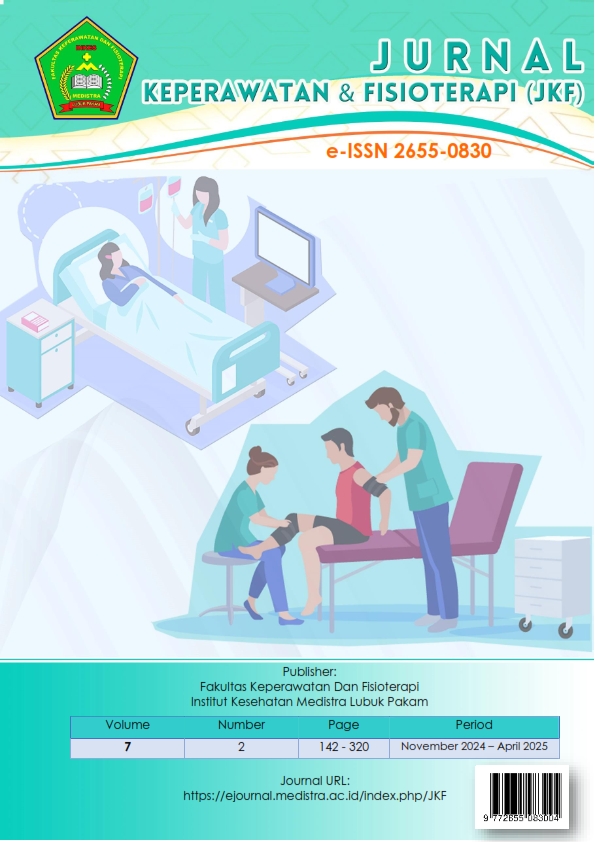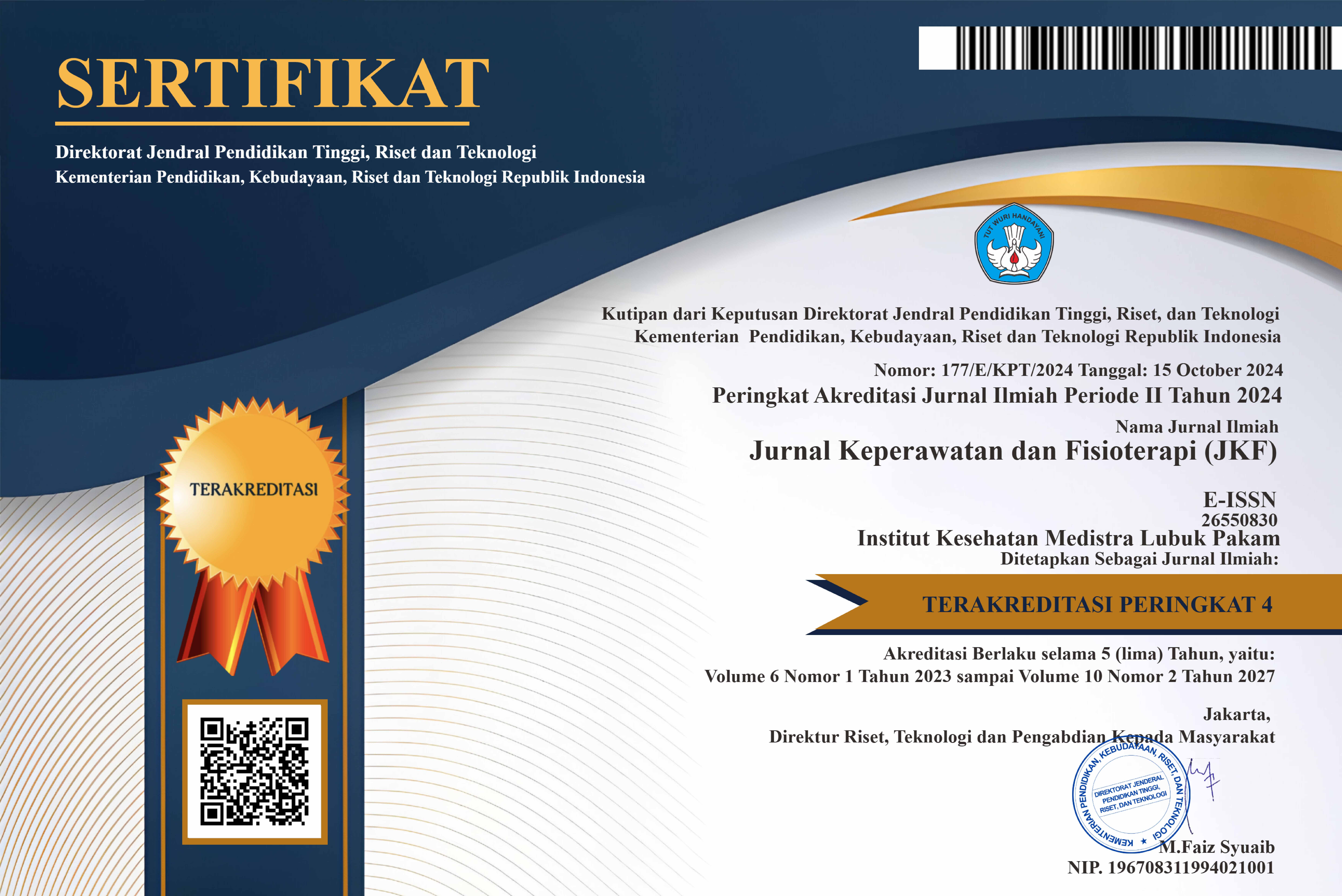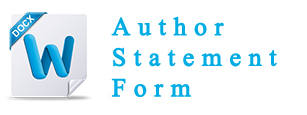The Relationship between the Availability of Essential Medicines and Outpatient Satisfaction in the Pharmaceutical Installation
DOI:
https://doi.org/10.35451/q2549a92Keywords:
Essential Medicines, Patient Satisfaction, Pharmaceutical InstallationAbstract
Background: The availability of essential medicines is a critical factor influencing the quality of pharmaceutical services and greatly affects patient satisfaction. A lack of essential medicines can worsen patient conditions and reduce trust in hospital services. Objective: This study aimed to analyze the relationship between the availability of essential medicines and outpatient satisfaction at the Pharmaceutical Installation of Grandmed Hospital Lubuk Pakam. Research Methods: A quantitative approach with a descriptive correlational design was used. A total of 150 outpatients were randomly selected. Data were collected using a questionnaire and analyzed using Pearson correlation tests to assess the strength and direction of the relationship between variables. Results: The findings revealed a strong and statistically significant positive relationship between the availability of essential medicines and patient satisfaction, with a correlation coefficient (r) of 0.76 and a p-value of 0.0001. Patients who received the required medicines reported higher satisfaction levels than those who did not. Conclusion: The higher the availability of essential medicines in the pharmaceutical installation, the greater the patient satisfaction with pharmaceutical services. Hospital management is encouraged to strengthen the procurement and distribution system, improve inventory management, and enhance communication with patients to sustain and improve satisfaction levels.
Downloads
References
World Health Organization. Model list of essential medicines. 22nd ed. Geneva: World Health Organization; 2021.
World Health Organization. The World Medicines Situation 2011: Rational Use of Medicines. Geneva: World Health Organization; 2011.
Wibowo, S. Evaluasi kepuasan pasien terhadap pelayanan farmasi di rumah sakit. Jurnal Pelayanan Kesehatan. 2021; 6(1):89-95.
Pratiwi, F., Lestari, Y. Pengaruh ketersediaan obat terhadap kepuasan pasien di rumah sakit. Jurnal Manajemen Pelayanan Kesehatan. 2020; 9(2):122-129.
Subiyantoro, H., Santoso, D. Ketidaksesuaian stok obat dan dampaknya terhadap kualitas pelayanan kesehatan. Jurnal Administrasi Rumah Sakit. 2022; 13(3):45-52.
Syamsul, N., Nasution, J. Ketersediaan obat esensial dan dampaknya terhadap kepuasan pasien rawat jalan di rumah sakit. Jurnal Kesehatan Masyarakat Indonesia. 2021; 15(2):145-153.Fudholi, A. (2015). Penerapan Jaminan Kesehatan Nasional dalam Meningkatkan Standar Pelayanan Fasilitas Kesehatan. Jakarta: Penerbit Kesehatan Indonesia.
RS Grandmed Lubuk Pakam. Laporan Tahunan Instalasi Farmasi. 2024.
Tim Manajemen Kualitas RS Grandmed Lubuk Pakam. Survei Kepuasan Pasien Rawat Jalan. 2023.
Maslow AH. A theory of human motivation. Psychological Review. 1943;50(4):370-396.
World Health Organization. The Selection and Use of Essential Medicines. WHO Technical Report Series 1021. Geneva: WHO; 2019.
Saeed A, Ibrahim MI, Bukhari NI. Patient satisfaction with community pharmacies services: A cross-sectional study in Saudi Arabia. Saudi Pharm J. 2016;24(6):547-552.
Donabedian A. The quality of care: How can it be assessed? JAMA. 1988;260(12):1743-1748.
Cleary PD, Edgman-Levitan S. Health care quality: Incorporating consumer perspectives. JAMA. 1997;278(19):1608-1612.
Austin Z, Gregory P, Martin JC. Pharmacy practice research: From prescription to research agenda. Can J Hosp Pharm. 2006;59(4):171-179.
Management Sciences for Health. Managing Drug Supply: The Selection, Procurement, Distribution, and Use of Pharmaceuticals. 2nd ed. West Hartford, CT: Kumarian Press; 1997.
Cipolle RJ, Strand LM, Morley PC. Pharmaceutical care practice: The patient-centered approach to medication management. 3rd ed. New York: McGraw-Hill; 2012.
Ware JE Jr, Snyder MK. Dimensions of patient attitudes regarding doctors and medical care services. Med Care. 1975;13(8):669-682.
Ministry of Health Republic of Indonesia. Pharmaceutical Service Standards in Hospitals. Jakarta: Ministry of Health; 2018.
Hogerzeil HV. The concept of essential medicines: Lessons for rich countries. BMJ. 2004;329(7475):1169-1172.
Schommer JC, Gaither CA. A segmentation analysis for pharmacy services. Am J Pharm Educ. 2014;78(1):1-8.
Epstein RM, Street RL Jr. Patient-centered communication in cancer care: Promoting healing and reducing suffering. NIH Publication No. 07-6225. Bethesda, MD: National Cancer Institute; 2007.
Pratiwi DA, Purwanti D, Handayani R. Pengaruh Dukungan Manajemen terhadap Peningkatan Ketersediaan Obat di Rumah Sakit. J Manaj Pelayanan Kesehatan Indonesia. 2020;4(2):55-61.
Department of Essential Medicines and Health Products, WHO. Improving access to essential medicines for mental, neurological, and substance use disorders. Geneva: WHO; 2018.
Yilmaz A. Longitudinal research design and analysis in social and behavioral sciences. Int J Res Educ Sci. 2019;5(1):227-241.
Glickman SW, et al. Pay-for-performance, quality of care, and outcomes in the United States. N Engl J Med. 2007;356(5):492-501.
Downloads
Published
Issue
Section
License
Copyright (c) 2025 Romauli Anna Marbun

This work is licensed under a Creative Commons Attribution 4.0 International License.
Copyright in each article is the property of the Author.


























